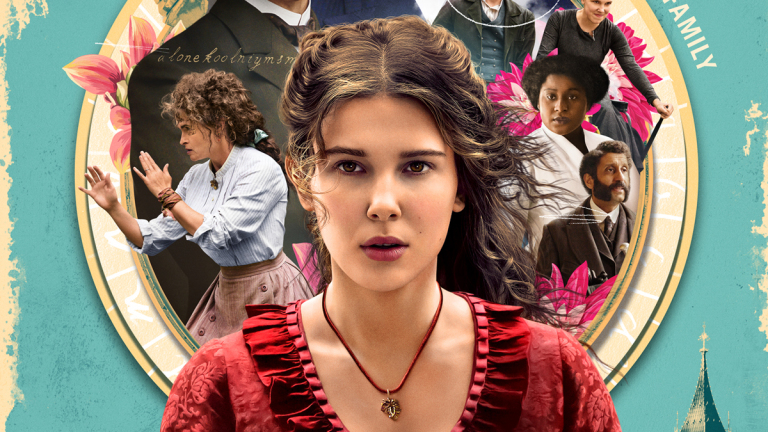Elementary, my dear readers: “Enola Holmes” is a must watch
Enola Holmes surpasses Sherlock’s sleuthing in Netflix’s latest release.
September 28, 2020
When you think of the name “Holmes,” what name first comes to mind? Sherlock? Well, after watching Netflix’s new movie “Enola Holmes,” that won’t be the case.
The movie follows Enola, played by Millie Bobby Brown, an independent young girl brought up by her single mother Eudoria, played by Helena Bonham Carter, in twentieth century England. Her upbringing is anything but typical for the time, as she explains in one scene: taught English literature instead of embroidery, politics in place of penmanship, and fighting instead of flattery. After her mother’s mysterious departure on the morning of her sixteenth birthday, Enola sets out to find her. Her only clues? A box of flower-adorned cards, an envelope of money, and an address in London. She catches a train to London and embarks on her journey, picking up a string of unlikely allies on the way.
Millie Bobby Brown charmingly filled the titular role and brought an instantly likable energy to Enola’s character. Brown frequently addressed the camera in asides that should have been cheesy but somehow worked with her honest and endearing narration. Alongside Brown, Louis Partridge as Lord Tewkesbury, a runaway young lord mastered the difficult balance between the clever and naïve sides of his character, and showed much more depth than I expected from an amateur actor. His chemistry with Brown was friendly and cheeky, so much fun to watch in the more humorous scenes. In darker scenes, Sam Claflin shone as the snobbish Mycroft with his upper class demeanor taking on an imperious air when he threatened to send Enola off to finishing school. His curly mustache and monocle were classic touches; even in his attire he clung to the “proper way of doing things”. Opposite Claflin, Henry Cavill played Sherlock. While the film Sherlock was well played and had serious depths, he was a far cry from the literary Sherlock Holmes, who rarely gets emotional and walks with a more Keatonesque rhythm. That’s not to say that Cavill didn’t do a fine job, it was just more tender and less shrewd that I was expecting.
The film was well shot, filled with picturesque scenery and varying camera angles to add visual interest. A peppering of Chaplin-esque film reel bits gave viewers a humorous break from shot and after shot, and broke up the asides well. With cleverly used graphics, the movie seemed less stuffy than some period pieces, but still retained that olden feeling.
Though 1900 doesn’t seem that long ago, it was a time where many modern ideals were scoffed upon. “Enola Holmes” exhibits this political mess, with integral plot details pertaining to voting rights and women’s suffrage. The line between “old thinkers”- those who aligned with those olden ideals- and “new thinkers”- those focused on revolutionizing these ideals- is repeatedly delineated throughout the movie through conversations and impassioned monologues about suffrage. Edith Crayston and Eudoria Holmes are both strong female characters who address these topics, and I applaud the film team for undertaking the political side of the story as well.
Witty and mysterious, “Enola Holmes” perfectly captured the intrigue of intertwined mysteries, politics, and family, all with a dash of on-brand humor. I definitely recommend this movie to any fans of young adult mysteries! If you enjoy this movie, be sure to check out the books it was based on, the Enola Holmes books by Nancy Springer.






